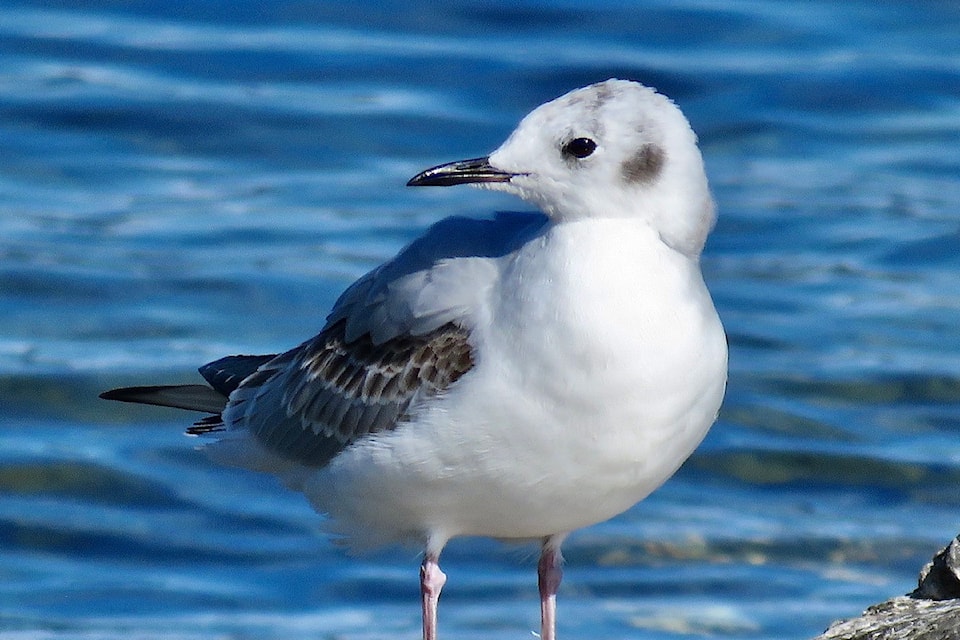I love it when unexpected wildlife situations occur.
Every season provides different bird arrivals and departures as various species pass through my Okanagan ‘hood’. These days Fall birds are returning from a breeding summer in the north, heading south for Central America or even further.
Thus it wasn’t a big surprise to spot a bird that I hadn’t seen for awhile. From a distance I thought it might be a gull. But it’s feeding pattern over a shallow area of the lake…quick turns, dashing surface skims with abrupt dives for fish fry…left me mystified.
Hmmm. Who is this?? As it streaked by closer to me, I could see mostly white sharp-pointed wings, with a greyish head marking on a small aerodynamic body.
Speculating with my birding partner, we settled on a tern, but which one? Before that thought could be more developed a similar but different bird swooped in and began a somewhat similar fishing technique. Clearly they were two different birds with similar size, shape, wingspan and fishing approach.
After studying our photos, we identified the second bird as a juvenile Bonaparte’s gull and the first as a Common Tern, early representatives of the many that would be passing through shortly.
Curiously, they seemed to be congenial fishing buddies…stopping for a break, then off fishing again, then stopping for a break. The ‘buddy’ idea felt confirmed when they appeared to fish and rest in the same location the next day. When we proposed this idea to a very knowledgeable birder friend, he said, “That’s known,” in a casual manner I took to mean, “Well, of course!”
That also confirmed bird sightings of some years before. In the Okanagan shrub and ponderosa pine ‘back 40’ where I lived at the time, I’d spotted flocks of birds that seemed to arrive, feed and depart together.
I continued to notice similar mixed flocks throughout the year, especially during Fall & Spring when choice food options were available.
That’s what flocking together is all about, similar & abundant food hunting requirements! Add team benefits such as a “nuclear” species around which a flock might form, sentinel species that keep an eye on potential danger, and associates that join in when flock is moving through.
I recall seeing mixed flocks of similar sized birds arriving together that included chickadees, finches, sparrows, nuthatches, juncos and my favourite surprise visitor…red crossbills.
They’d arrive as a flock and land in prime feeding spots…on wild roses, Saskatoon and snowberry bushes, some breaking away to branches on the Ponderosa pines and shaggy Douglas fir.
In a flurry of focused busyness, they’d feed on their preferred snacks. The nuthatches choosing tree bark inhabitants…the black-capped chickadees seeking berries, seeds, and insects, their diet for most of the year.
In about twenty minutes of energized feeding activity, intense bird chatter and a splash in the birdbath, they’d whirl away again.
Apparently it’s not unique for birds to travel and feed together. Perhaps that’s how this saying originated…”Birds of a feather, flock together.”
To contact Dianne please go to writer@diannebersea.com



